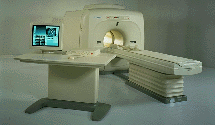 | Info
Sheets |
| | | | | | | | | | | | | | | | | | | | | | | | |
 | Out-
side |
| | | | |
|
| | | | |
Result : Searchterm 'Superconducting' found in 1 term [ ] and 69 definitions [ ] and 69 definitions [ ] ]
| previous 6 - 10 (of 70) nextResult Pages :  [1] [1]  [2 3 4 5 6 7 8 9 10 11 12 13 14] [2 3 4 5 6 7 8 9 10 11 12 13 14] |  | |  | Searchterm 'Superconducting' was also found in the following services: | | | | |
|  |  |
| |
|
Device Information and Specification
CLINICAL APPLICATION
Whole body
CONFIGURATION
Cylindrical Wide Short Bore
SE, FE, IR, FastSE, FastIR, FastFLAIR, Fast STIR, FastFE, FASE, Hybrid EPI, Multi Shot EPI; Angiography: 2D(gate/non-gate)/3D TOF, SORS-STC
IMAGING MODES
Single, multislice, volume study
TE
8 msec min. SE; 0.9 msec min. FE
less than 0.011 (256x256)
1.0 min. 2-DFT: 0.2 min. 3-DFT
32-1024, phase;; 64-1024, freq.
65.5 cm, patient aperture
4050 kg (bare magnet incl. L-He)
POWER REQUIREMENTS
380/400/415/440/480 V
COOLING SYSTEM TYPE
Closed-loop water-cooled
Liquid helium: approx. less than 0.05 L/hr
Passive, active, auto-active
| |  | | | |  Further Reading: Further Reading: | News & More:
|
|
| |
|  | |  |  |  |
| |
|
From Toshiba America Medical Systems Inc.;

FLEXART™ series is a 0.5 T superconducting MRI system that has been designed to meet the expanding role of MRI in today's clinical environment. The system utilizes innovative technologies such as digital RF, high speed actively shielded gradients and optimized RF coils which support a wide range of MRI developments.
Device Information and Specification
CLINICAL APPLICATION
Whole body
Quadrature, solenoid and multi-channel configurations
SE, FE, IR, FastSE, FastIR, FastFLAIR, Fast STIR, FastFE, FASE, Hybrid EPI, Multi Shot EPI; Angiography: 2D(gate/non-gate)/3D TOF, SORS-STC
IMAGING MODES
Single, multislice, volume study
POWER REQUIREMENTS
380/400/415/440/480 V
COOLING SYSTEM TYPE
Closed-loop water-cooled
| |  | |
• View the DATABASE results for 'FLEXART™' (2).
| | | | |
|  | |  |  |  |
| |
|
The region surrounding a magnet and exhibiting a magnetic field strength, which is significantly higher than the earth's magnetic field (typically 0.05-0.1 mT, depending on geographical location).
Initially the most magnets had very extensive fringe fields. Magnets with iron have reduced the fringe field substantially (passively shielded magnets). At least, adding appropriate additional superconducting coils to superconducting magnets has resulted in a drastic reduction of the extent of the fringe fields (actively shielded magnets).
Due to the physical properties of magnetic fields, the magnetic flux, which penetrates the useful volume of the magnet will return through the surroundings of the magnet to form closed field lines. Depending on the magnet construction, the returning flux will penetrate large open spaces (unshielded magnets) or will be confined largely to iron yokes or through secondary coils (shielded magnets).
Fringe fields constitute one of the major hazards of MR scanners as these fields acting over extended distances outside the magnet produce strong attractive forces upon magnetic objects. These can thus 'fly' into the magnet when loose nearby acting like projectiles. Fringe fields also exert unwanted forces on metallic implants in patients. | |  | |
• View the DATABASE results for 'Magnetic Fringe Field' (3).
| | | | |  Further Reading: Further Reading: | Basics:
|
|
| |
|  |  | Searchterm 'Superconducting' was also found in the following services: | | | | |
|  |  |
| |
|
System for actively cooling structures in a superconducting magnet. If only cryoshields are cooled (two-stage refrigerator), no liquid nitrogen will be needed and He boil off will be reduced. If additionally the superconducting coil support is actively cooled (three-stage refrigerator)
the He-consumption can be essentially reduced to zero. See also Boil off Rate. | |  | | | |  Further Reading: Further Reading: | News & More:
|
|
| |
|  | |  |  |  |
| |
|
Superconductivity is a phenomenon occurring in certain materials at low temperatures, characterized by the complete absence of electrical resistance and the damping of the interior magnetic field. A ideal superconductor can carry an electrical current without experiencing energy losses (resistance, heat). The resistance of superconducting wire is nearly equal to zero at temperature near to absolute zero (-273.15° C or 0 K). This temperature is usually established by using liquid helium.
See also Superconducting Magnet, and Cryogen. | |  | |
• View the DATABASE results for 'Superconductive' (7).
| | | | |  Further Reading: Further Reading: | | Basics:
|
|
News & More:
| |
| |
|  | |  |  |
|  | |
|  | | |
|
| |
 | Look
Ups |
| |